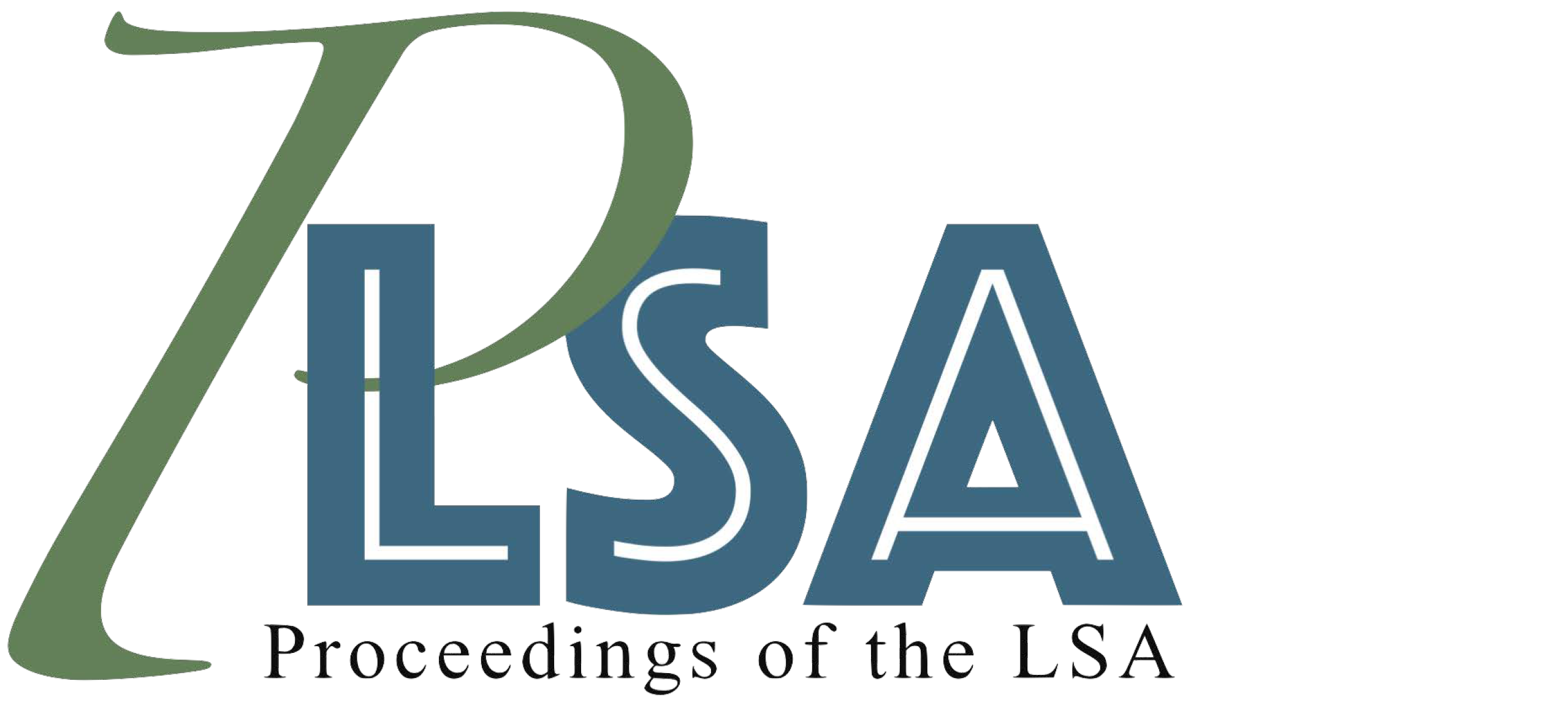A pilot acoustic study of Modern Persian vowels in colloquial speech
DOI:
https://doi.org/10.3765/plsa.v2i0.4059Keywords:
phonetics, acoustic phonetics, Modern Persian, Farsi, Persian vowel system, colloquial speech, vowel space, vowel length, formant frequenciesAbstract
While the current literature on Modern Persian (MP) shows heightened interest in its vowel inventory, a cogent synchronic account of Modern Persian vowels (MPV) has yet to be presented. Previous phonological descriptions of MPV presuppose a pairing system based on a historical length distinction that is still reflected in MP orthography: /i:, e/, /u:, o/, /ɒ:, æ/. A synchronic phonological analysis of MPV must be based on phonetic measurements; however, existing acoustic studies examine only formal speech, and thus do not reflect colloquial surface forms. Therefore, the goal of this investigation is to lay the groundwork for a comprehensive acoustic study of MPV that presupposes no pairings and is based on colloquial speech in a controlled prosodic environment. Vowel duration and first and second formants were measured using Praat for 90 CVC(C) monosyllables as pronounced phrase-finally in carrier sentences by two Tehrani native speakers: one male, one female. Results show that average durations for each vowel contradicted the traditional length-based pairings. Furthermore, features of the following phonological environment likely to affect vowel length – postvocalic consonant type, coda complexity (CVC vs. CVCC), and adherence to the Sonority Sequencing Principle in complex codas – had no notable effect. Results of formant measurements show the two non-high back vowels to be higher than expected, whereas the high back vowel was noticeably centralized.Downloads
Published
2017-06-12
Issue
Section
Articles
License
Published by the LSA with permission of the author(s) under a CC BY 4.0 license.
How to Cite
Aronow, Robin, Brian D. McHugh, and Tessa Molnar. 2017. “A Pilot Acoustic Study of Modern Persian Vowels in Colloquial Speech”. Proceedings of the Linguistic Society of America 2 (June): 17:1–7. https://doi.org/10.3765/plsa.v2i0.4059.
